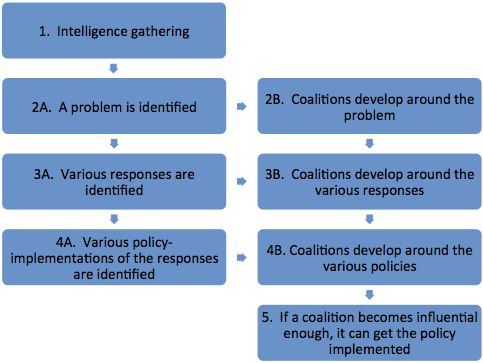Writing
The case for building expertise to work on us ai policy, and how to do it
I think that for some people, working on AI policy could be one of the most impactful things that you could do with your career. This article lays out why I think this, and how to get into the field.
AI policy and security introductory reading list
This introductory reading list contains my favourite newsletters, articles, and reading lists on the intersection of AI policy, security and AI safety.
American with a science PhD? Get a fast-Track into AI and STEM policy by applying for the acclaimed AAAS Science & Technology Fellowship by Nov 1
This article lays out the case for applying to the AAAS S&T Fellowship for those with a PhD interested in working in US AI policy.
Good policy ideas that won’t happen (yet)
This piece reports back on some policy development efforts that I took part in during the early years of the Center for Effective Altruism. I outline a model of policy development and use it to demonstrate why I think many of the policies discussed are not ready to be implemented yet.
Select academic publications
The role of short-lived climate pollutants in meeting temperature goals
Niel H. A. Bowerman, David J. Frame , Chris Huntingford, Jason A. Lowe, Stephen M. Smith and Myles R. Allen. Nature Climate Change (2013)
My co-authors and I argue that current emissions of methane, black carbon, and other short-lived climate pollutants do little to contribute to peak temperatures due to climate change. We explore the role of these gases in meeting temperature targets.
Cumulative carbon emissions, emissions floors and short-term rates of warming: implications for policy
Niel H. A. Bowerman, David J. Frame, Chris Huntingford, Jason A. Lowe and Myles R. Allen. Philosophical Transactions of the Royal Society A (2011)
While the total amount of carbon burned controls the total amount of warming, this paper shows how the rate of CO2-induced warming is controlled by the rate of CO2 emissions. We explore the implications of this rates-based approach, as well as the concept of emissions floors, on setting emissions targets.
Equivalence of greenhouse-gas emissions for peak temperature limits
Stephen M. Smith, Jason A. Lowe, Niel H. A. Bowerman, Laila K. Gohar, Chris Huntingford and Myles R. Allen. Nature Climate Change (2012)
This paper demonstrates that peak warming due to climate change can be estimated from two quantities: the cumulative total emissions of long-lived greenhouse gases plus the instantaneous rate of emissions of short-lived greenhouse gases. The paper discusses the implications of this finding for setting greenhouse gas emission targets.
Emission targets for avoiding dangerous climate change
My DPhil thesis discusses the various options for setting emissions targets for tackling climate change, and explores the scientific case for each. It then introduces some new options for setting emissions targets that more predictably constrain temperature increases due to climate change.
My Google Scholar profile has my full list of academic publications.








